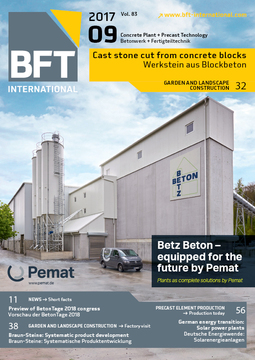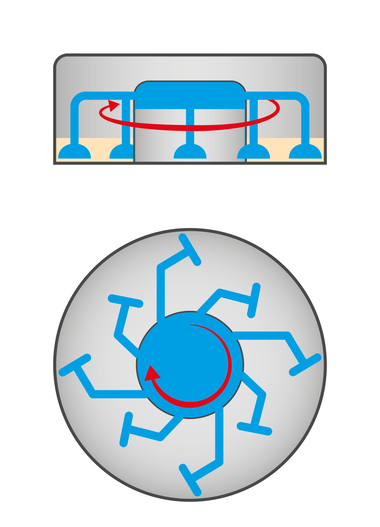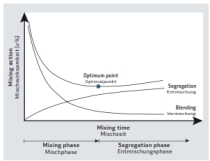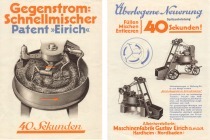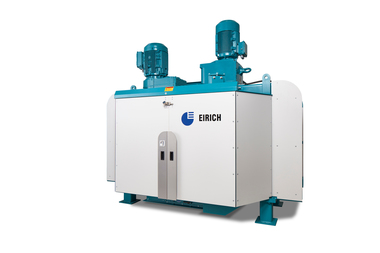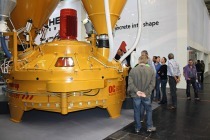Mixing technology for lightweight concrete
The demand for high-quality mixes is increasing. Meeting this demand is often difficult, if not impossible. The reason for this is that mixing processes, as described in the literature, are always subject to a segregation process. Investigations carried out with various conventional mixing systems show, according to Eirich, that mixing should not take place for an unrestricted period of time. The best mix quality attainable in a certain mixing time depends on the mixing system used: if mixing takes longer, the quality decreases, segregation takes place, and the optimum mix quality cannot be reached.
The Eirich mixer, according to its manufacturer in Hardheim, Germany, offers a way out of this difficulty. In this mixer, a rotating mixing container transports the mix, and the mixing tools or agitators perform only the function of mixing. One hundred percent of the mix is circulated in a single rotation of the container. This, according to Eirich, has the effect that, in production mixers with bottom discharge, mixing can take place for any length of time without segregation; the mixing tools continue to operate during discharging.
Less grain fracturing
Eirich mixers are often the preferred choice for mixing lightweight concrete. These mixers, due to their inherent characteristics, need fewer mixing tools – and these tools, moreover, do not sweep the container wall. Whereas in other mixing systems the number of mixing tools increases as the volume increases, Eirich mixers with capacities from 1 to 3,000 liters require only a single moving tool. Larger mixers have two agitators: the DW40, with a capacity of 12,000 l, also requires only four mixing tools.
Laboratory results are easily applied to practice
The increasing number of mixing tools ranging from laboratory mixers to production mixers, is a significant reason for changes to the mixing process, or even to the mix design, which are necessary for many mixing systems when mix designs developed on laboratory mixers are applied to large production mixers. Based on the principle of fewer mixing tools, upscaling with Eirich mixers turns out to be significantly easier, so that designs developed in the laboratory can be implemented in practice much faster.
To those interested in its mixers, Eirich offers the use of its equipment for experiment. This equipment is available in all the company’s locations.


